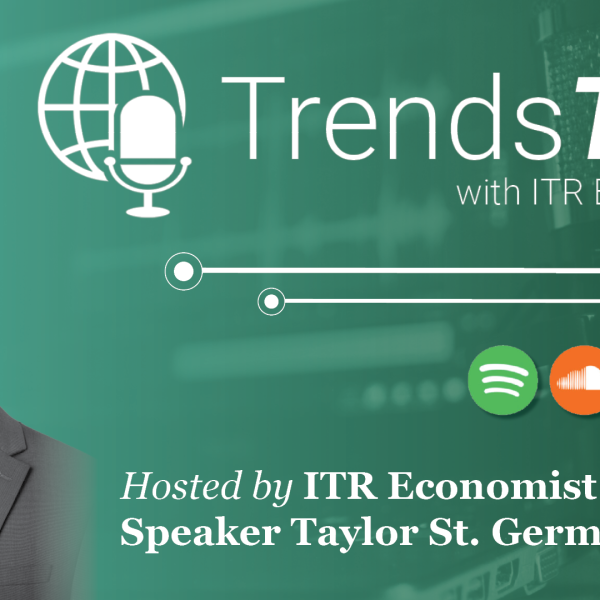- Mon - Fri: 8:30 - 5:00
- +1-603-796-2500
- ITR@itreconomics.com
October 7, 2022
- Home
- portfolio
- TrendsTalk
- October 7, 2022
with brian beaulieu
BOND YIELD UPDATE
Join ITR CEO and Chief Economist Brian Beaulieu as he provides updated insights on the bond yield and Federal Reserve actions in our latest episode of TrendsTalk.
The below transcript is a literal translation of the podcast audio that has been machine generated by Rev.
Hi, I’m Brian Beaulieu, CEO and Chief Economist for ITR Economics, and thank you for joining me for this edition of TrendsTalk. Today I want to talk about the Federal Reserve and the bond yield. Both are very important. The good news is that the bond yield has widened over the last week. In fact, as of yesterday’s market close, the long bond 10-year government bond yield was at 3.83%, and the 90-day treasury was at 3.33. So we have a 50 basis point swing, and some breathing room involved there. We had seen the yield curve flatten out to the point where we had like 17, 18 bips on a couple of days. So 50 is good. Remember we’re on the watch for that inverse yield curve. And if it happens and it’s sustained for two months, then it’s going to be very, very like nigh impossible for us to avoid a recession down the line.
So high interest rates alone aren’t necessarily going to do broad scale damage, although they’re clearly hurting in some markets like housing. Housing affordability remains very much an issue because of these interest rates going up. The Fed’s been saying they’re going to raise interest rates again in November and December, 50 basis points each time. That remains to be seen. I just checked the PPI numbers. They’re coming down. One [inaudible 00:01:41] rate of change has come down last two months. It’s at 12.7%, but it’s receding. We have copper running below year ago levels, aluminum running below year ago levels, steel running below year ago levels. All of those are harbingers of some lessening of the rate of inflation, yet the CPI level and at the PCE level, which is what the Fed really cares about. So maybe if they see enough action, they will go light on both or skip one of those, but it’s probably not going to be their last move.
The real interest rate remains negative. Real, it’s the economist’s term for if you take the nominal rate, you subtract out the rate of inflation, you get the real interest rate. And it’s hard to see that they’re going to feel like they’re doing their jobs until they can get that real interest rate to be positive.
Now, part of the way you do that is by bringing down the rate of inflation. So it’s a bit of a foot race between raising interest rates and bringing down the rate of inflation. Wouldn’t surprise us if they’re raising rates through the first half of 2023 doing. We’ll have to see how much damage they do to those interest rate sensitive markets between now and then. In the meantime, though, all these rates going up, what we’re doing is we’re exporting inflation to our major trading partners.
In our talks, we’ve talked about nationalization. Bringing our supply chain in, shortening the supply chain, onshoring. Nationalization is also, “Look, we got to raise these interest rates. It’s what’s best for the United States. We don’t really care that it’s creating havoc around the rest of the world.” It’s making other central bankers raise their interest rates at a time when their economies are not thriving by any means. A lot of their inflation overseas is because of our inflation being exported out to them. By lowering the value of their foreign currency, it brings inflation onto their shores. So it gets very messy very quickly. It’s more than just the United States economy that we’re talking about right now.
Went through this exercise this morning for a client and some parts of their business are not very interest rate sensitive and other parts of their business were. And that’s something that ITR can help you with if you’re not comfortable in running that analysis or you’re not sure how to run that analysis. Chances are your profit is going to be inflation sensitive, and therefore you got to manage those costs very, very carefully and those selling prices also.
To what extent you’re interest rate sensitive, it’s worth asking yourselves, asking your team. And as I just said, let us know. We’d be glad to help you out. For now, no inverse yield curve. We expect higher interest rates. We expect inflation to abate. And the consumer is going to keep on spending money, and therefore the economy will putter along at a very mild pace. Doesn’t mean we don’t falter for a quarter here or there, but we don’t see that broad based recession. Not yet. Thank you for listening. We’ll talk to you soon.





